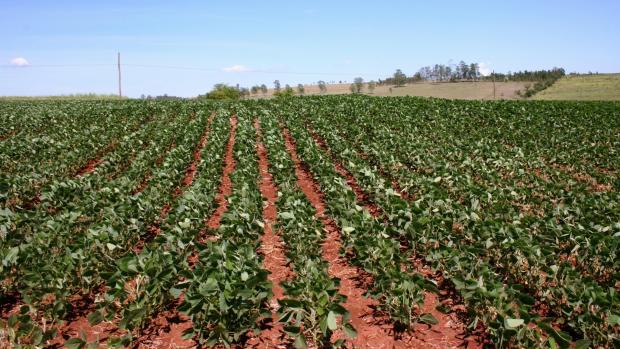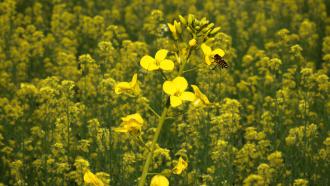
Pest infestation of agricultural crops have been a long standing challenge faced by our farmers. In a recent study, researchers at the Indian Institute of Technology here have developed a genetically modified variety of cowpea (लोबिया in Hindi) that is resistant to the Mungbean Yellow Mosaic India Virus (MYMIV).
Cowpea is an important grain legume grown across India that is one of the major source of protein. It is also used as animal fodder and green manure. It is estimated that cowpea is cultivated in almost half of 1.3 million hectares of area in Asia. Among the various diseases that affect the crop, the Mungbean yellow mosaic disease, characterized by a bright yellow mosaic on the leaves of infected plants, is a major one. Often, outbreaks of this infection causes a significant crop loss to the tune of $300 million per year approximately. “Leaf curl and golden mosaic diseases caused by MYMIV incur significant losses to cowpea in Southeast Asia”, says Dr. Lingaraj Sahoo, a Professor from IIT, Guwahati and a co-author of the study published in the journal PLOS One.
In this research, the scientists have used RNA interference (RNAi) technology, a process in which small RNA molecules inhibit gene expression, to impart resistance to cowpea. In this case, certain genes of the MYMIV virus genome, AC2 and AC4 primarily responsible for the infection and need to be inhibited. Using Agrobacterium mediated transformation, a process in which Agrobacterium helps in inserting a gene of interest in the host plant, AC2, AC4 and fusion of AC2 and AC4 (AC2+AC4) were inserted in the cowpea. This new type of cowpea can now protect itself from the virus because it has the required RNA molecules to stop the attack of the virus.
_12.jpg)
The researchers observed that the newly developed transgenic plants developed 100% resistance against the MYMIV infection, as compared to those that were not genetically transformed. In addition, the transgenic variety showed increased levels of small interfering RNAs (siRNA) which are part of RNAi pathway and help in degrading mRNA of virus genes after transcription. These siRNA played no role in gene silencing of host plant which could affect the overall health of the plant.
But in a world that is widely divided on the prospects of genetically modified crops, how does this transgenic cowpea fair? Would their nutritional quality be compromised? The researchers are finding it out. “We have not yet evaluated the changes in nutritional attributes, if any, in the seeds of the transgenic cowpea. But our findings rule out the interference of virus gene silencing on plant metabolisms”, comments Dr. Sahoo.
As a next step, the scientists are planning to conduct field trials of the new transgenic cowpea, which will allow the commercialisation of this variety in the future. These transgenic cowpea will be a boon to farmers as economic losses will decrease with enhanced cowpea productivity. Also, this strategy can be applied to other legumes which face the same problem. “The enhanced cowpea productivity would help to curb the prices of cowpea grains in the domestic market and save the revenue loss due to pulses import”, says Dr. Sahoo talking about the impact of this research.






